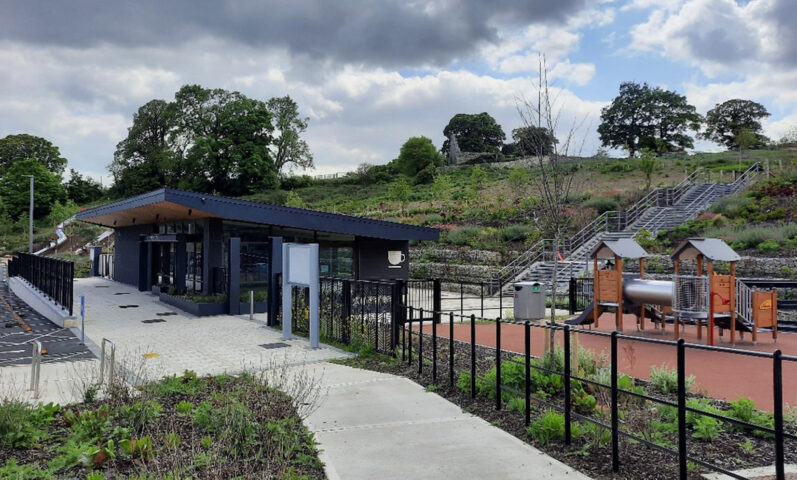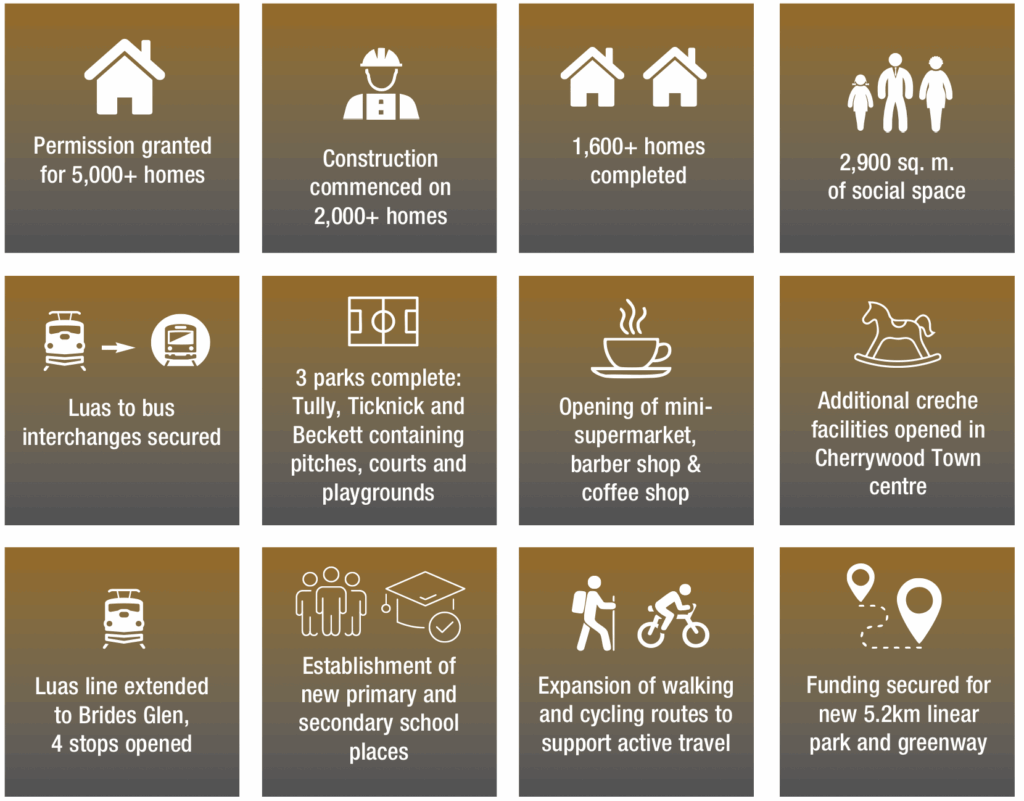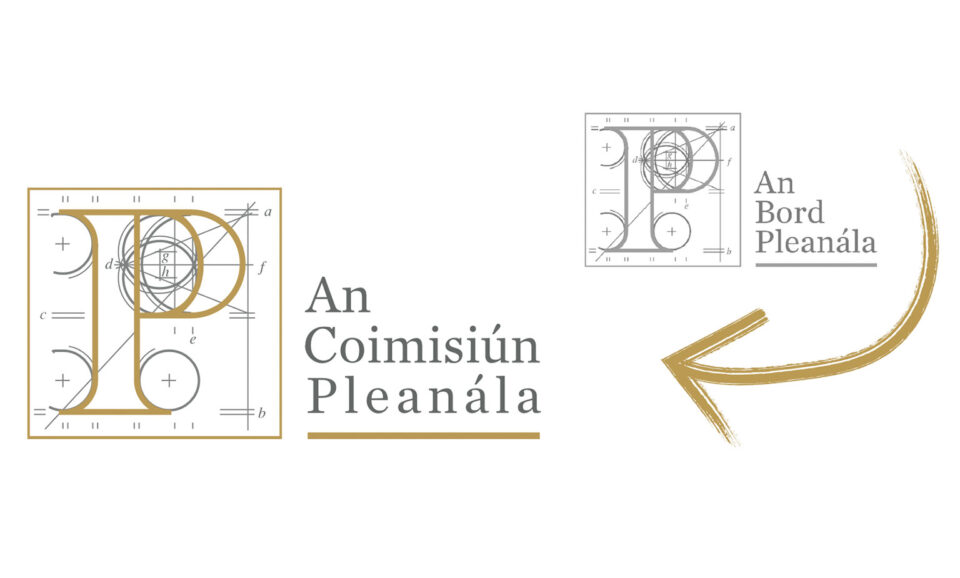
Marking 30 years of Clúid as we say farewell to CEO Brian O’Gorman
1st July 2025
Breaking down barriers to support housing delivery
1st July 2025Supporting sustainable communities: The successful provision of infrastructure in Cherrywood

The Housing Agency’s Housing Insights series highlights examples of good practice from across Ireland’s housing sector – showcasing innovative, effective approaches to housing delivery, planning, and infrastructure coordination, writes Nicola Turley, Policy Officer, The Housing Agency.
Cherrywood, Ireland’s largest Strategic Development Zone (SDZ), is one such example. It is setting a new standard for how we plan and deliver sustainable communities. With over 10,000 homes planned, a new town centre, three village parks, schools and integrated public transport, Cherrywood offers a clear lesson for practitioners: when infrastructure leads, community follows.
The Housing Insights paper explores how Cherrywood has successfully delivered essential infrastructure in tandem with residential development – and what housing practitioners can learn from its approach.
Infrastructure first: Laying the groundwork for community
A defining feature of Cherrywood’s success is its clear emphasis on delivering infrastructure ahead of residential development. In the Cherrywood Planning Scheme, Dún Laoghaire-Rathdown County Council (DLRCC) prioritised the provision of social and physical infrastructure such as roads, parks, school sites and sustainable transport links before housing construction began. By the time residents moved in, the essentials of a sustainable community were already up and running – rather than waiting years for basic services to follow.
To coordinate such a complex project, Dún Laoghaire-Rathdown County Council set up a dedicated Development Agency Project Team – a multidisciplinary group of planners, engineers, architects and financial experts. Acting as a single point of contact for developers, landowners, and state bodies, this ‘one-stop shop’ model supported early land activation and ensured consistent implementation of the Planning Scheme.
Phasing with purpose
Phasing and sequencing were carefully built into the Cherrywood Planning Scheme. Infrastructure was not an afterthought; it was built into the delivery timeline. Key infrastructure like schools and open spaces had to be delivered in tandem with new homes, with thresholds tied to the number of residential units. For example, school sites had to be transferred before 1,000 homes could be approved. Rather than delivering housing first and chasing amenities later, Cherrywood’s planning ensured these elements were integrated from the start.
Collaboration
Collaboration was another cornerstone of Cherrywood’s success. With 13 landowners, multiple state agencies, and significant environmental considerations, strong communication was essential. Dún Laoghaire-Rathdown County Council hosted regular forums and workshops, giving stakeholders early guidance, resolving queries, and ensuring alignment from concept to delivery. This proactive engagement helped avoid delays and ensured all stakeholders worked toward a shared goal.
Funding to unlock delivery
Dún Laoghaire-Rathdown County Council funded the required infrastructure by drawing on a mix of government programmes, like the Local Infrastructure Housing Activation Fund and Urban Regeneration and Development Fund, alongside strategic development contributions. In some cases, developers who delivered key infrastructure, such as roads, were allowed to reduce their contributions accordingly. This flexible approach accelerated delivery, allowing development to progress faster once key infrastructure was in place.

Complied by The Housing Agency using information from Dún Laoghaire-Rathdown Copunty Council (2024). County Development Plan 2022-2028 Two-year monitoring report.
Designing for a ‘10-minute neighbourhood’
Cherrywood was designed as a ‘10-minute neighbourhood’, which builds on the ‘15-minute city’ concept popularised by Carlos Moreno, wherein a resident’s needs can be fulfilled by travelling within 15-minutes of their home and builds in several key elements of a sustainable community.
While the 15-minute city concept gained international traction post-2020, Cherrywood was ahead of the curve, and the 10-minute neighbourhood concept had not yet been formalised when the Cherrywood Planning Scheme was being drafted. This concept has been successful, and emerging data from DLRCC shows that its sustainable travel targets have been exceeded, and now, higher and more ambitious sustainable travel targets have been set.
Challenges and adaptation
Of course, challenges remain. The cost of building continues to be a barrier to affordability, and changes in post-Covid working patterns have altered demand for retail and office space. Dún Laoghaire-Rathdown County Council has responded by reviewing elements of the town centre plan and introducing planning amendments to adapt to changing needs. For example, car parking requirements are being adjusted to improve affordability, reduce reliance on private vehicles, and support more sustainable development patterns.
Progress and next steps
To date, Cherrywood has delivered over 1,600 homes, with more than 2,000 currently under construction. Public parks like Tully, Ticknick and Beckett are open, four Luas stops are operational, Luas to bus interchanges have been secured, and a range of local amenities – including crèches, shops, and active travel routes, are already serving residents. Cherrywood is not just a development – it is the foundation of an emerging sustainable community.
Cherrywood shows what’s possible when infrastructure, housing, and services are planned together.
For housing practitioners, the key takeaways are:
- plan and lead with infrastructure;
- phase development carefully;
- build collaborative teams; and
- stay flexible to change.
Ultimately, sustainable development starts with people. Homes are not just standalone units – they are part of a wider network of infrastructure, services, and community life. Cherrywood shows how bringing all these elements together from the outset can create lasting impact.
Read the full Housing Insights report here:







